Living creatures on earth have the potential to be quite dangerous. While some actively contribute to a large number of fatalities among humans, others are less widely known but extremely lethal when they come into contact.
Because different factors can be used to determine an animal’s level of danger, a collection of the most dangerous animals is not well defined. The top most deadly animals are listed below. There is no specific parameter for the selection of the animals included in the list. Each animal has a distinct feature that makes it a dangerous being.
1. Mosquito

The common mosquito, even smaller than the tsetse fly at just three millimetres in length, is regarded as a hazardous creature since it is responsible for a significant number of yearly deaths brought on by the more than 3,000 mosquito species that exist worldwide.
Infections including Malaria, Chikungunya, Encephalitis, Elephantiasis, Yellow Fever, Dengue Fever, West Nile Virus, and the Zika virus, which collectively affect an estimated 700 million people and cause 725,000 annual mortality, are among the diseases they are the main carriers of. More than half of the world’s population is currently at risk from illnesses spread by mosquitoes, according to the World Health Organization. The outbreak of infections spread by mosquitoes poses major challenges to public health systems. There has been a persistent effort throughout the decades to tackle such issues.
2. Hippopotamus
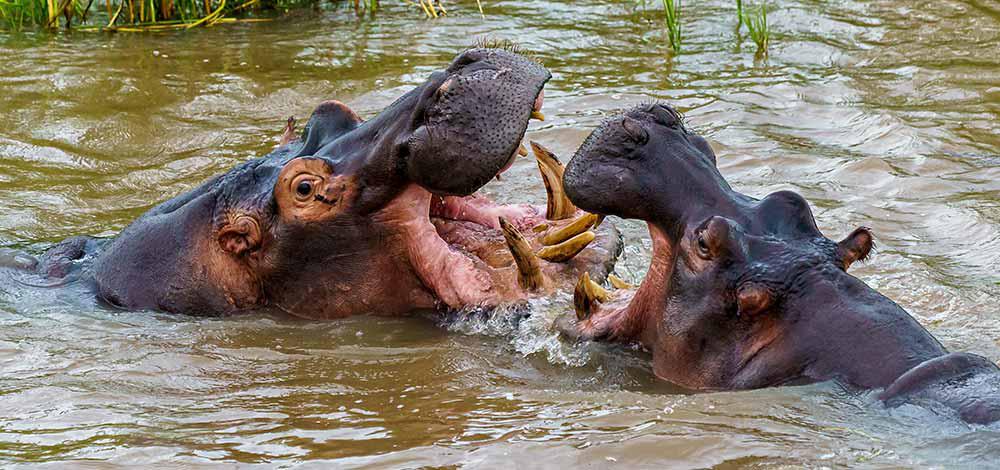
Often regarded as the deadliest animals in Africa, they have a mouthful of fangs that are sharp and powerful enough to cause fatal harm, and they are territorial and unpredictable. Despite its odd appearance, the hippopotamus is the deadliest large terrestrial mammal in the world, claiming the lives of 500 people in Africa annually.
Hippos are violent animals with strong-cutting teeth. Hippos use nearly 2-foot-long canines with a pressure of 2000 pounds per square inch when they attack. Although they have travelled to Colombia, their native habitat is the Sub-Saharan African rivers and lakes.
3. Stonefish
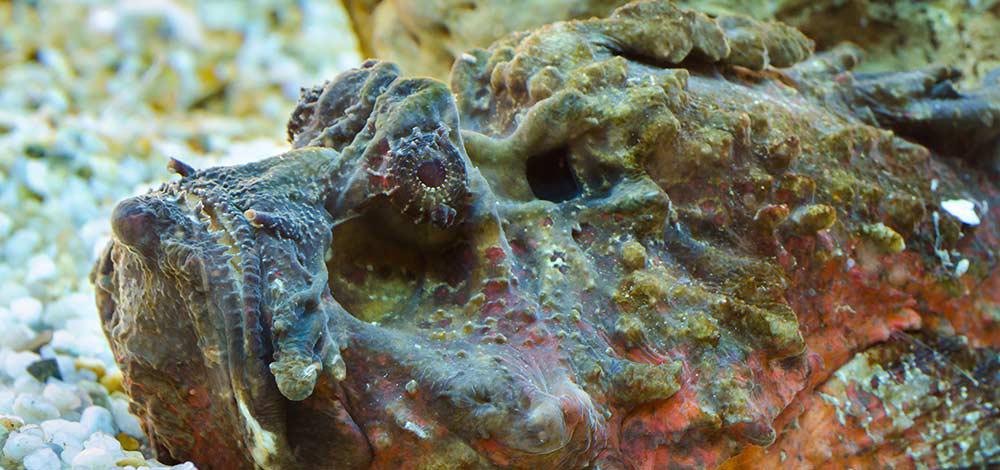
The most venomous fish in the world are stonefish. They use camouflage to deceive their prey, including humans, by blending in with reefs and the ocean floor. Along their back, they have 13 spines, and each spine possesses a poison gland. Venom is discharged when a human steps on or kicks a stonefish, putting them (or other aquatic foes) in for a painful and occasionally lethal ride.
In Australia, stonefish pose a particular threat to swimmers and divers. Since there is now a stonefish anti-venom, there haven’t been many stonefish-related fatalities in recent years. Additionally, a few species can be found in the Caribbean and the Florida Keys. They can also be found in the coastal waters of Australia, Indonesia, and India.
4. Komodo Dragon
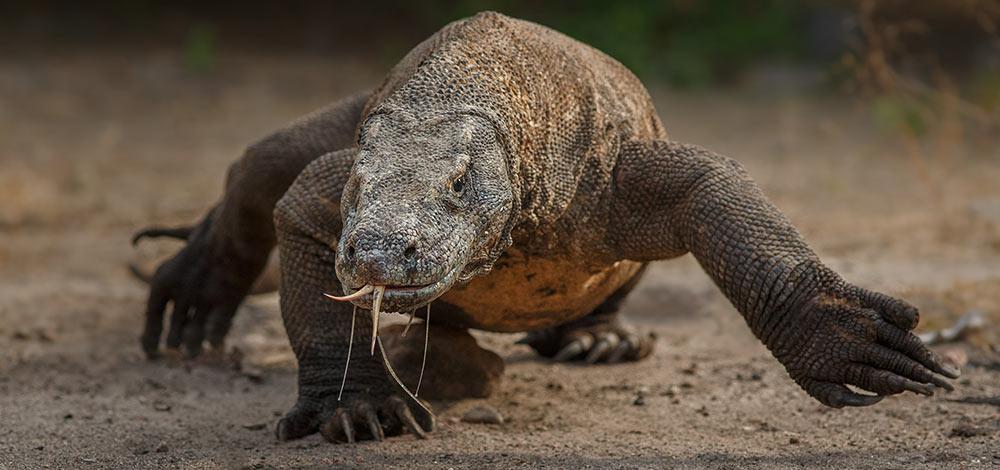
The largest lizard in the world, the Komodo dragon grows to a length of 10 feet and a weight of 150 pounds. Komodo dragons have started to draw some tourists to Indonesia in recent years. Visitors are welcome to view this sizeable lizard in its natural environment in Komodo National Park. However, these dinosaur monsters are just as ferocious as they appear to be; in the past 33 years, Komodo dragons have claimed the lives of four people.
The most recent fatal assault was in 2009. The venomous bite of Komodo dragons contains toxic substances that prevent blood coagulation. Their capacity to kill victims is a result of the trauma from the bite, pathogens from the Komodo dragon’s mouth, and rapid blood loss (humans included). They are found on Komodo Island and Lesser Sunda Islands of Indonesia
5. Saltwater Crocodile

These vicious predators, which can reach lengths of up to 23 feet and weigh more than a tonne, are known to take the lives of hundreds of people every year. Although their name is perplexing, saltwater crocodiles are particularly hazardous because they can attack rapidly and deliver a bite pressure of 3,700 pounds per square inch.
Being the sole species to demonstrate frenzied tail twitching followed by lunging head blows on its opponents, the saltwater crocodile emphasised its dangerous reputation. In the Indo-Pacific region, from northern Australia to Vietnam and everywhere in between, saltwater crocodiles can be found.
6. Pufferfish
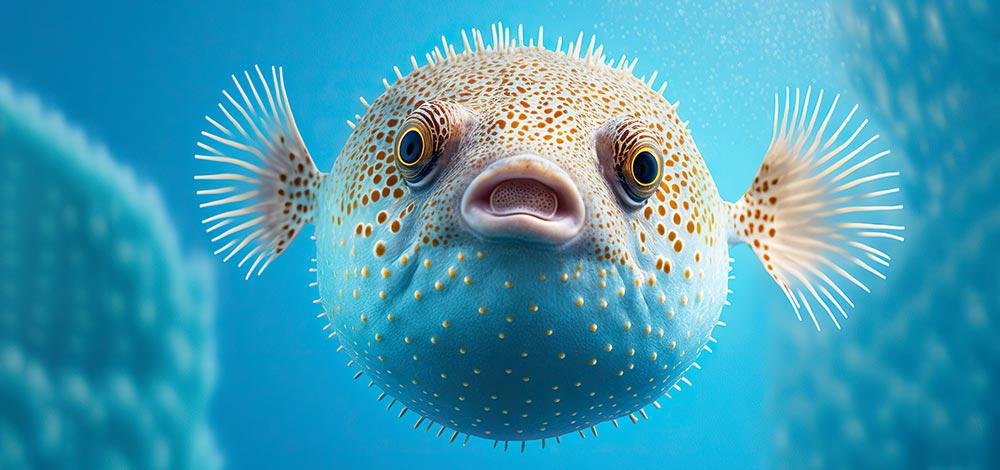
The same type of fish that blows up with spikes and stings you includes pufferfish, blowfish, and fugu. Let’s focus on fugu, a specific variety of pufferfish found in Japan that carries a toxin more lethal than cyanide. However, pufferfish is considered a delicacy in Japan.
The majority of pufferfish-related deaths in humans are caused by improper preparation of the fish’s meat. The Japanese Health Ministry reports that one of the most prevalent causes of food poisoning in the nation is fugu which has been improperly prepared. They Can Be found in the warm waters of the Indian, Pacific and Atlantic oceans.
7. Tiger

India is home to the bulk of the world’s wild tigers. Tiger attacks are uncommon because they don’t intend to kill people. However, they murder between 40 and 50 individuals yearly. In India, tiger assaults are a problem because a huge population interferes with their environment.
The preferred method of a tiger to kill its victim is to rush at the animal’s neck and cling on tightly with its strong jaws. However, if the tiger’s canines cut an artery, some of the prey may bleed out before they die normally from suffocation. In India, tigers have a history of attacking people who enter or put their hands into tiger enclosures at zoos. Assaults by tigers on humans have also been reported in the wild, particularly in the Sundarbans, an area of swamps and forests that lies on the boundary between Bangladesh and India.
8. Jellyfish

About 70 of the 2,000 different varieties of jellyfish that exist can harm you. One such terrible killer hiding in tropical oceans is the box jellyfish. It attacks with a poisonous venom that produces lung Edema, vomiting, headaches, and a fast heartbeat. In the Philippines alone, it is thought that box jellyfish are responsible for 20 to 40 fatalities annually.
These translucent, essentially undetectable invertebrates are considered the most deadly marine species in the world by the National Oceanic and Atmospheric Administration. In the waters of the Indo-Pacific, they are frequently seen floating or moving very slowly at rates of about five miles per hour.
9. Indian Saw-Scaled Viper
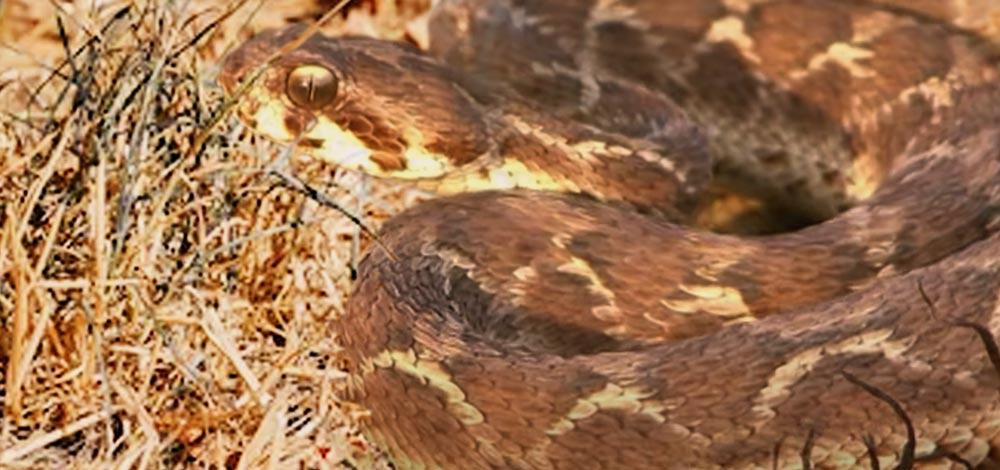
These snakes, also known as saw-scaled vipers or little Indian vipers, can be found in some of the most populated areas of the area they call home, which stretches well beyond India. By using their natural camouflage, they are able to blend in with the desert environment and go unnoticed.
Because they are usually active at night and make a sizzling sound to protect themselves, it is best to keep an ear out for it. This sound is produced by a behaviour known as stridulation, in which the snake coils up and rubs its scales together. Even after being warned, saw-scaled vipers are extremely aggressive and pack more than twice as much lethal poison into each bite. The Indian subcontinent, Central Asia, and the Middle East make up the Indian saw-scaled viper’s range.
10. Scorpions
There are around 30 to 40 different species of scorpions that can be fatal. Even though scorpions frequently inhabit deserts, they have also been spotted in rainforests and the Himalayas. All scorpions are dangerous, but you should be especially cautious with the yellow deathstalker. They will then either crush it or inject it with neurotoxic venom, depending on the size of their claws and the toxicity of their venom.
To enable the scorpion to consume its prey, this will either kill or paralyze it. Chelicerae are used in a very distinctive method of eating by scorpions. The Middle East’s deserts are home to this deadly, most venomous scorpion. Only a few other creatures, such as vinegaroons, have similar little claw-like appendages that extend from the mouth.
Chelicerae are utilised to remove little bits of food from the prey for digesting. They are extremely sharp. Scorpions can only digest food in a liquid form; they cannot digest solid foods.
11. Golden Poison Dart Frog
One of the most poisonous creatures on Earth is the golden poison frog. A single two-inch specimen contains enough venom to kill ten adult men. The name of the species comes from how the native Emberá people of Colombia have utilised its potent venom to tip blowgun darts for hunting for ages. With an average length of more than an inch, these vibrantly coloured amphibians are among the largest of the more than 100 species of poison dart frogs.
When under distress, it sweats a mixture of alkaloids, the most dangerous of which is “batrachotoxin,” which inhibits nerve signal transmission. Convulsions brought on by this result in death from respiratory paralysis and/or heart failure.
About one milligramme of batrachotoxin, found in each frog, is sufficient to kill 15 mature men or more than 20,000 mice. It is a thousand times more lethal than cyanide and more toxic than curare. They reside inside a small area of rainforest on Colombia’s Pacific coast.
12. Blue-Ringed Octopus
The little octopus’s body rarely exceeds the size of a golf ball and can be as small as a cent. The blue-ringed octopus is exceedingly venomous, despite having gorgeous brilliant yellow skin that is patterned with tiny blue rings that become more pronounced when it is threatened or under stress.
They are indigenous to the Pacific Ocean, which includes the Philippines, Japan, South Korea, Australia, and Indonesia. They reside in coral reefs and tidal pools and hide in shells or crevices when they’re not out searching for food or a partner. They can survive for around two years and often feed tiny crustaceans like crabs and shrimp.
Tetrodotoxin is produced by symbiotic bacteria in the salivary glands of blue-ringed octopuses (TTX). This chemical effectively blocks the transmission of nerve impulses and is neurotoxic. This prevents muscles from being able to contract and can have fatal results.
13. Brazilian Wandering Spider
The Greek word Phoneutria, which means “murderess,” is the source of the name for the genus of Brazilian wandering spiders, commonly known as armed spiders or banana spiders. Being one of the most toxic spiders on Earth, it makes sense why. Although anti-venom makes mortality less likely, its bite, which releases neurotoxic venom, can be fatal to humans, especially youngsters.
They can kill by ambush as well as a direct assault. These spiders are known to be aggressive due to the toxicity of their bite and their scary stance. However, these actions serve as protective systems. The Brazilian wandering spider had previously been listed as the most venomous spider in the world by Guinness World Records.


